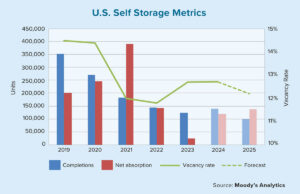A perfect storm will pave the way for a boom in home equity lending. Mortgage companies and originators should be taking steps to prepare. This uptick in demand for home equity loans will be fueled by rising interest rates, increasing home values, the enduring housing inventory shortage and changing lifestyles in a world still emerging from the COVID-19 pandemic.
Historically, interest rates have played a significant role in the demand to turn home equity into cash. Home equity loans allow homeowners to borrow on built-up equity through either a fixed-rate, one-time loan or through a home equity line of credit (HELOC).
The Federal Reserve made a recent move to control rising inflation, announcing at its March 16, 2022, committee meeting that it was raising the overnight rate for the first time since 2018. What’s more, the Fed indicated that more rate hikes are likely to be warranted in the coming year in the attempt to calm inflation.
As the Fed continues to raise rates and housing inventory remains limited, existing homeowners have less of an incentive to trade up and will be more inclined to pull cash out of their current home.
One day after the Fed announced its rate hike, Freddie Mac released its mortgage rates report, which showed that rates had surged well past the 4% mark. As the Fed continues to raise rates and housing inventory remains limited, existing homeowners have less of an incentive to trade up and will be more inclined to pull cash out of their current home.
Cash-out refinances allow homeowners to pull money out of their homes, but for borrowers who either bought their home or refinanced their mortgage in recent years when interest rates were at record lows, going this route could significantly increase their monthly payments. For this reason, cash-out refinances may no longer be the best product for homeowners looking to access their equity.
In fact, rising interest rates significantly impact monthly mortgage payments. For example, a $400,000 loan (which is close to the $408,100 price tag for a median-priced home in the U.S. as of fourth-quarter 2021) with a 3% interest rate may cost more than $200 less per month than the same loan with a 4% interest rate.
During the first few months of 2022,
the average mortgage rate breached the 4% mark for the first time since May 2019, according to Freddie Mac. This could discourage many homeowners from refinancing, even if they really want to access their home equity. The Fed also announced this past March that it will reduce its bond holdings by up to $95 billion a month. This will further tighten access to credit and is likely to increase interest rates.
Sticky inflation
Inflation has reached its highest point in 40 years, data from the U.S. Bureau of Labor Statistics shows. This is being driven significantly by three main factors: gas prices, shelter and food.
At the beginning of the pandemic, when interest rates dropped to historic lows and stimulus checks were sent out, the Fed said that inflation would be temporary. Now, economists are not so sure. Home-price growth is one contributing factor to this inflationary surge.
In fact, home prices could continue to surge through the remainder of 2022 and not drop to single-digit annualized increases until 2023. As home prices continue to rise, homeowners will have more opportunities to tap into their accumulated equity.
Fierce competition
With all the right economic factors in place, the home equity boom is set to launch as consumers continue to adapt their homes to meet their lifestyles amid rising interest rates and higher home prices. Even as this occurs, other types of originations are likely to decrease as, simply put, there aren’t many new or existing homes on the market to purchase.
Unsold housing inventory at the end of February 2022 totaled 870,000 existing units, up 2.4% from the prior month but down 15.5% from one year earlier when 1.03 million homes were available, according to the National Association of Realtors. Unsold inventory sat at a 1.7-month supply at the current sales pace, up from the record-low supply of 1.6 months in January 2022 and down from two months of supply in February 2021.
There is a long way to go before there is a balance between supply and demand. With current homeowners not being able to move up the property ladder, many will look to stay in their homes. Realtor.com noted that 1.1 million homes were started in 2021, which was 13.4% more than in 2020. Home starts per 1,000 households increased during the past year, from 7.9 in 2020 to 8.9 in 2021.
Distressingly, however, a decreasing proportion of affordable homes were being built and sold in 2021 compared with the previous three-year period, according to Realtor.com. In 2021, only 25% of new homes were sold for less than $300,000, down from 42% in 2018. This will further constrict purchase mortgage opportunities at the starter-home level.
As homebuilders focus on pricier homes, the cost of getting a cash-out refinance will continue to rise, making it a less attractive option. At the end of February 2022, originations dropped significantly due to higher interest rates, according to data from the Mortgage Bankers Association. As rates edged above 4%, refinance applications fell by 56% year over year while purchase loan applications fell by 6%.
As originations decrease, lenders will need to find new ways to increase sales volume, which makes home equity lending a prime and growing opportunity. In the year ahead, competition among lenders will grow fiercer as originators battle over a limited number of borrowers amid rising interest rates. Lenders will need to diversify their product offerings in order to serve more borrowers and keep volume steady, and they would be wise to put systems in place to accommodate the uptick in demand for home equity loans.
Stronger focus
This is where home equity lending comes into play. It allows the owner to borrow against their equity without touching their first mortgage, leaving in place what is likely a lower interest rate. And because a significant asset backs this type of loan, it can be obtained with a lower interest rate than, say, a personal loan.
While homebuilders are increasing construction activities and builder confidence remains cautiously optimistic, the rate of new-home completions will not keep up with household formations, leaving more households with more than one generation of the family living under their roof. As Realtor.com noted, the number of U.S. households reached an all-time high in December 2021, surpassing the previous high in August 2020. Many of these households will be staying put for the foreseeable future.
In the meantime, inflation continues to surge and will push the Fed to raise interest rates multiple times in 2022 and 2023. This will drive homeowners away from refinances, even for cash-out purposes. The surge in home prices will leave many wanting to tap into their equity. Home equity loans will provide the opportunity to do this without impacting the interest rate on the borrower’s first mortgage, like it would through a cash-out refinance.
● ● ●
All of these factors point to an uptick in home equity demand. As Americans continue the trend of spending more time working from home, be it on a permanent or semi-permanent basis, they are more likely to wish to improve the comfort of these spaces.
Moving to a new home simply won’t be an option due to the rising-rate environment, limited inventory and surging home prices. Nonetheless, lifestyles are changing, so what solution does a lender have? A stronger focus on home equity lending will be key to gaining an edge in this important and growing market. ●
-
Dan Bailey is senior vice president of WFG Lender Services and WFG Enterprise Solutions. Bailey has nearly 20 years of experience in the title insurance industry, where he began his career as a compliance officer for a national title insurance company. He joined WFG in 2013, where he oversees operations for the lender services division, heads the enterprise solutions sales team and leads strategic direction for both organizations.
View all posts





